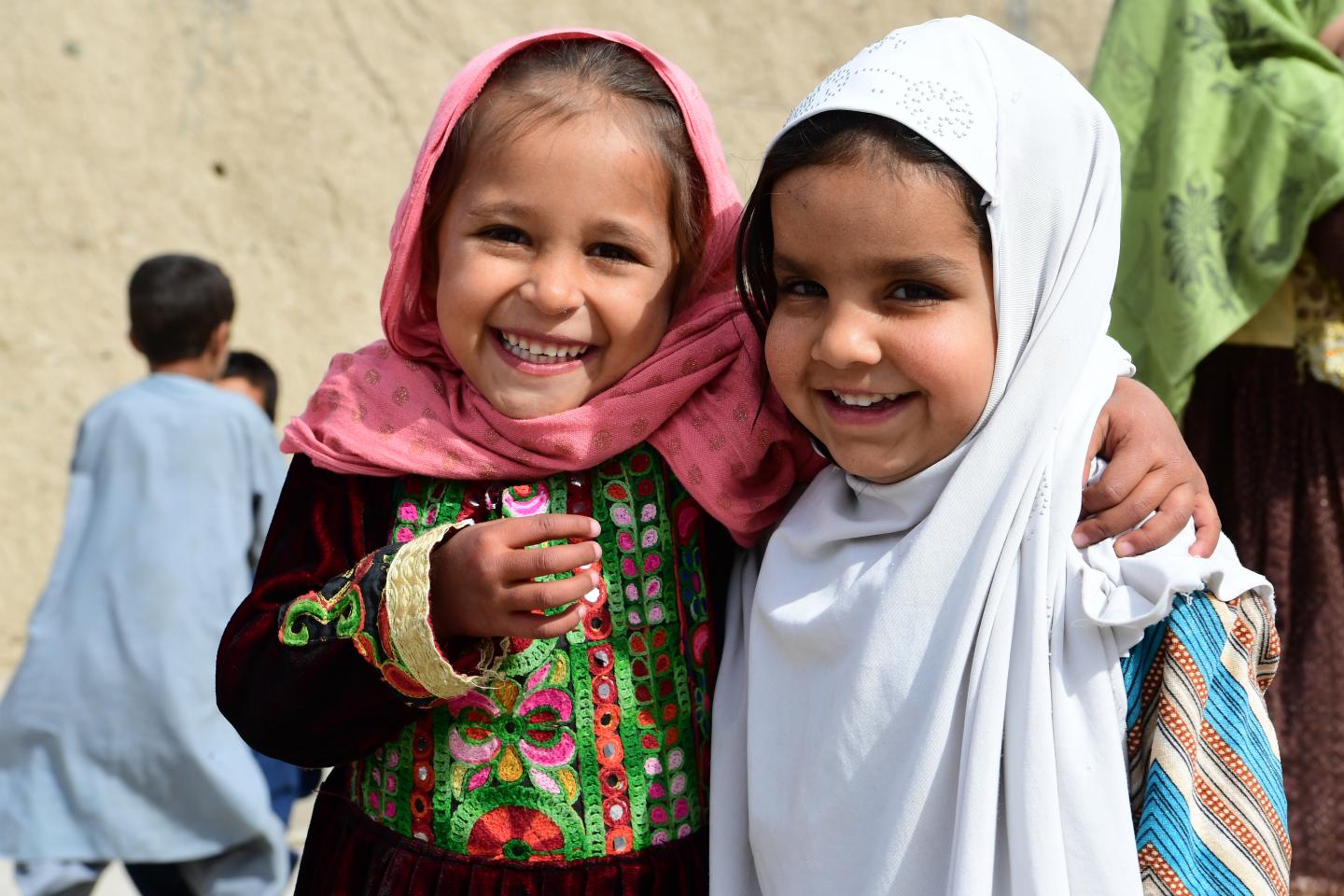
What’s in store for children in 2022?
UNICEF, 31 January 2022
The new year is associated with many things: resolutions, fireworks… and forecasts for the year to come. Whether it’s The Economist or the IMF, everyone has a view, and those views tend to converge. But missing from these analyses is consideration of the implications for children. That’s where UNICEF comes in.
UNICEF has just published Prospects for Children 2022 – the latest in our global outlook series, which aims to help all of those working to support children survive and thrive to better understand where we are, where we are going and what we need to do. This year, the report is organized around 10 key trends that are expected to shape the year ahead, and our interpretation of how they will each shape children’s lives.
2022 sees us entering a third year of the pandemic, and the harm done to children is increasingly evident: A record rise in child poverty. Setbacks to progress on routine vaccinations. Disruption to education for an entire generation. As in the past two years, prospects for children will continue to hinge foremost on the pandemic and how it is managed. The question is not when will the virus be eradicated, but when can we mitigate its effects sufficiently that it will no longer disrupt lives? As we enter the pandemic’s third year, we are not there yet, and losses for children accumulate.
In 2021, the unwillingness of the world to unite in its response resulted in repeated missteps. In 2022, the same lack of cooperation puts at risk the G20 target to vaccinate at least 70 per cent of the population in every country by mid-year. The longer the delay, the greater the odds of further escape variants delaying the virus’s eventual containment.
COVID-19 has been a uniquely dis-equalizing crisis: lopsided access to vaccines aside, learning losses have been greatest among the poorest children; and job losses have been disproportionately borne by women and youth. In 2022, inequities are set to take new forms: access to COVID mRNA doses and boosters will remain restricted, and access to life-saving treatments like Paxlovid will be even more exclusive.
By year’s end, rich countries are expected to regain their pre-pandemic economic trajectory, whereas low-income countries are forecast to remain below trend. Exacerbating this is the premature withdrawal of policy support anticipated in many countries, demanded by fiscal constraints, putting at risk public services for children and expanded social protection measures that are serving as a lifeline to many families.
Long-term consequences
While children in rich countries can expect to recover from the pandemic before those in poor countries, children in humanitarian situations face a more permanent crisis. Record humanitarian needs are forecast in 2022. As the impact of climate change grows, it will trigger new disasters, drive instability and exacerbate existing vulnerabilities. If the global response to COVID reveals the ill-health of multilateralism, conflict and climate change remind us that its deterioration occurs when it is needed more than ever.
As the impact of climate change grows, it will trigger new disasters, drive instability and exacerbate existing vulnerabilities.
Other sources of instability are likely to arise with consequences for children. Armed drones will transform warfare, while cyberattacks increasingly target institutions on which children depend, including schools. Inflationary pressures threaten the purchasing power of households, especially those most exposed to global food and energy markets.
Time for a change
In 2022, the world needs to recast its COVID strategy to focus not only on mitigating the virus, but mitigating its effect on society – particularly children. That means committing to keep schools open and providing schools and families the resources they need to keep kids safely in school and learning. It means placing families and children, and the goods and services on which they depend, at the center of recovery packages and protecting them from the fiscal adjustments that are expected to follow. It means investing in restoring losses from the pandemic: in learning, nutrition, and mental health. And it means doubling down on health systems strengthening and expanding access to primary healthcare in the world’s poorest countries.
Notwithstanding these challenges, children and young people express optimism for the future and 2022 will present opportunities to prove them right.
For instance, technology and infrastructure developed for the pandemic can drive the next revolution in child survival. The first mRNA-vaccine candidates for TB, malaria and HIV are expected to enter clinical trials in 2022 and 2023, just as the RTS,S malaria vaccine is rolled out in sub-Saharan Africa.
Elsewhere, 2022 should see green investment emerge as a growth engine. Electric vehicle sales are expected to more than double, while renewables are expected to account for 95 percent of new power generation over the next five years, driving climate mitigation and providing countless new jobs for young people.
In addition, emergency pandemic policies, including expansions of childcare and mental health services, and more generous and universal social protection, provide a chance to institutionalize stronger child protections and support, and in doing so strengthen trust between governments and citizens.
Original article here.